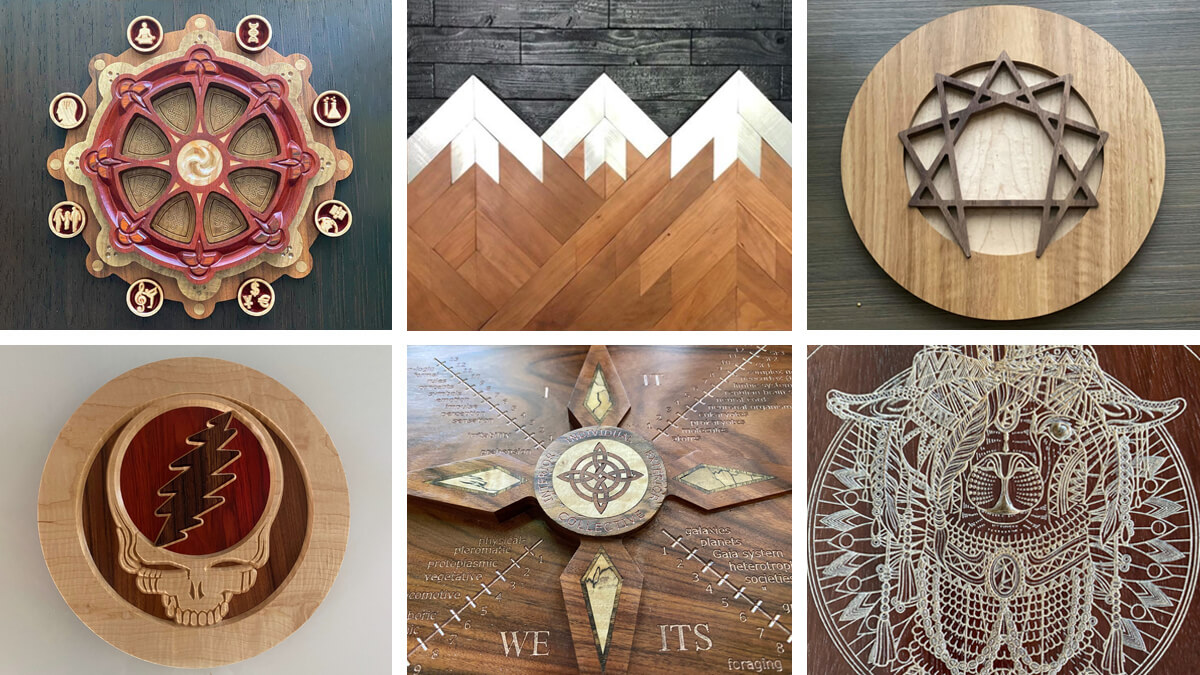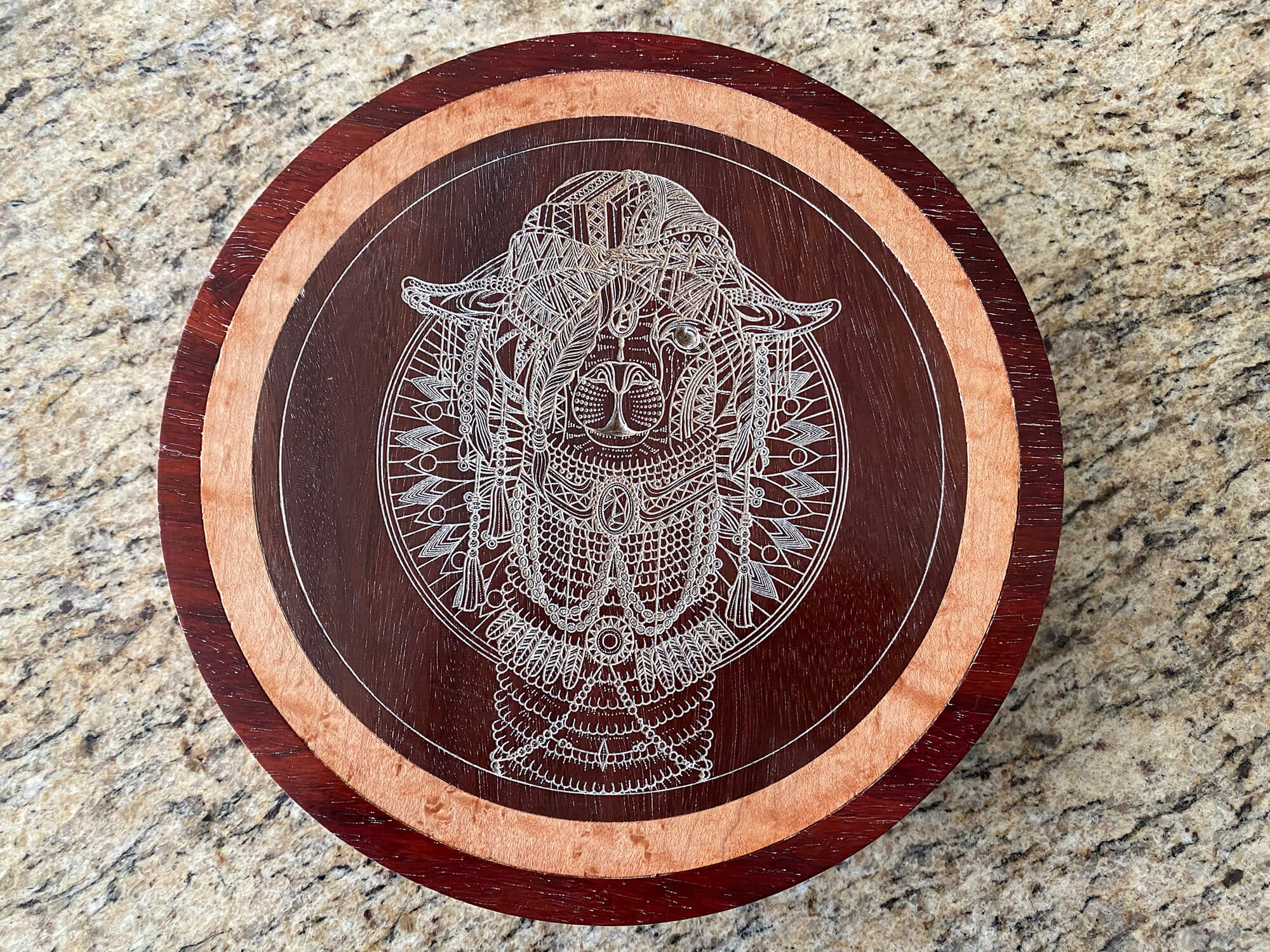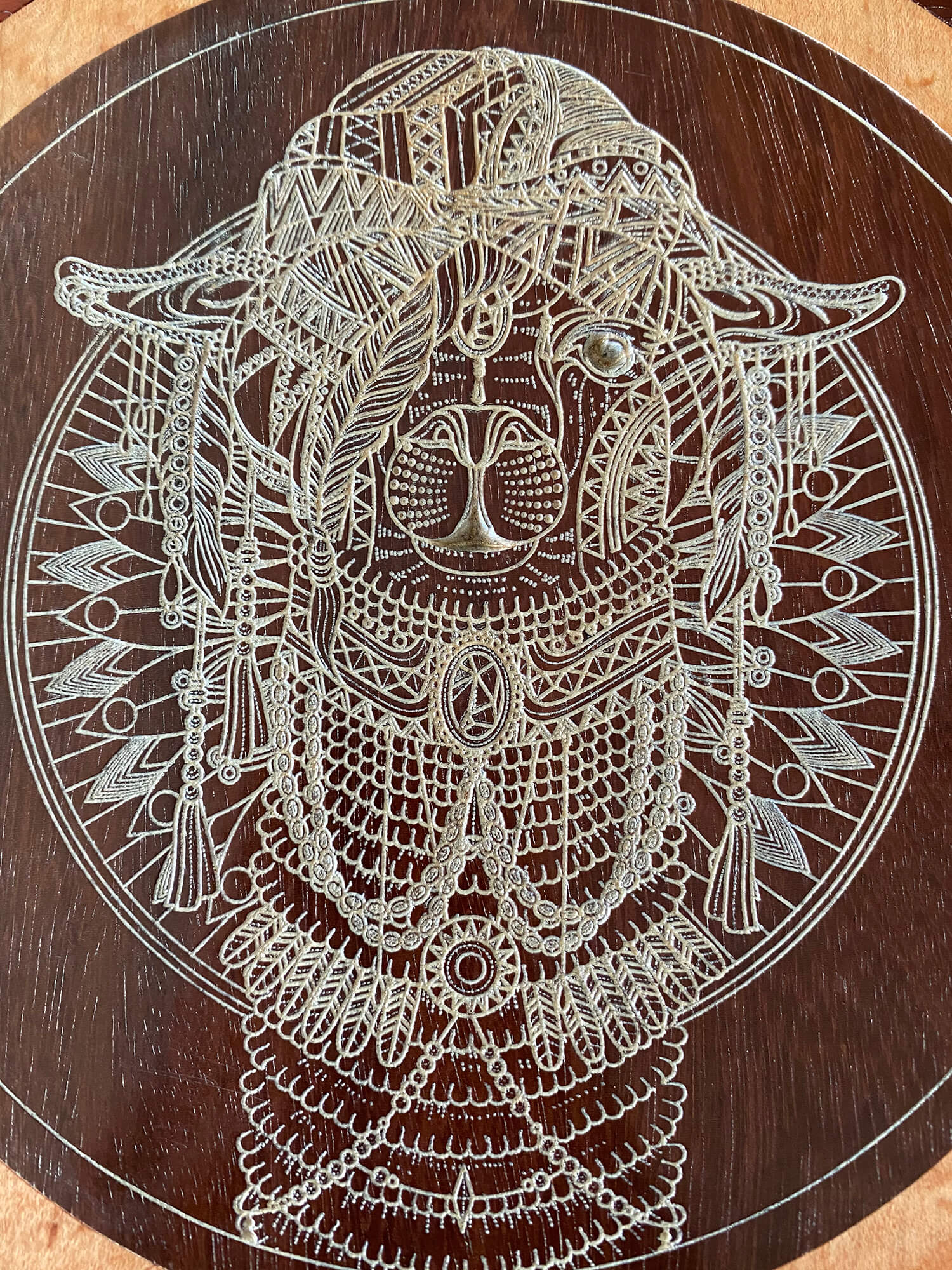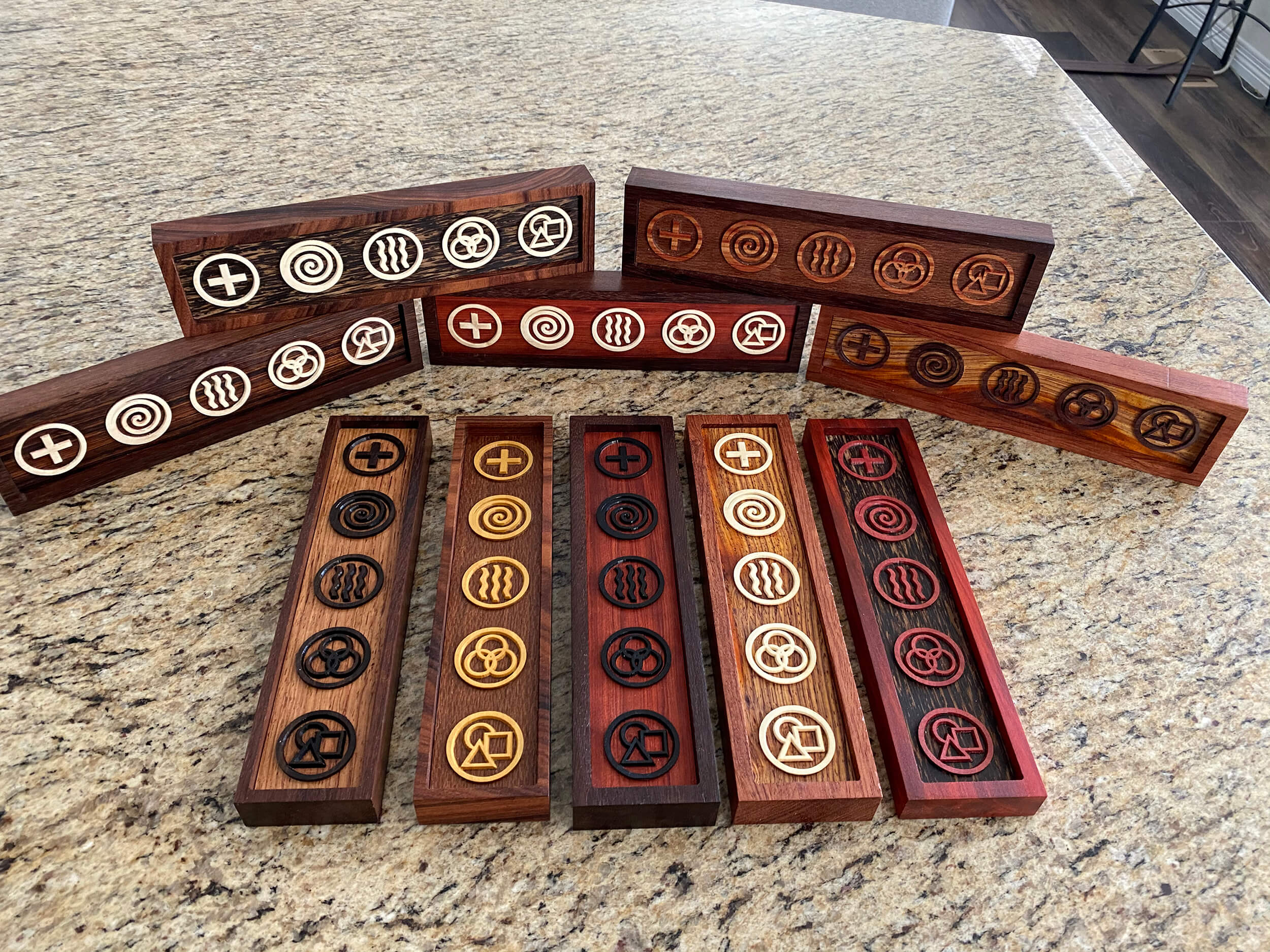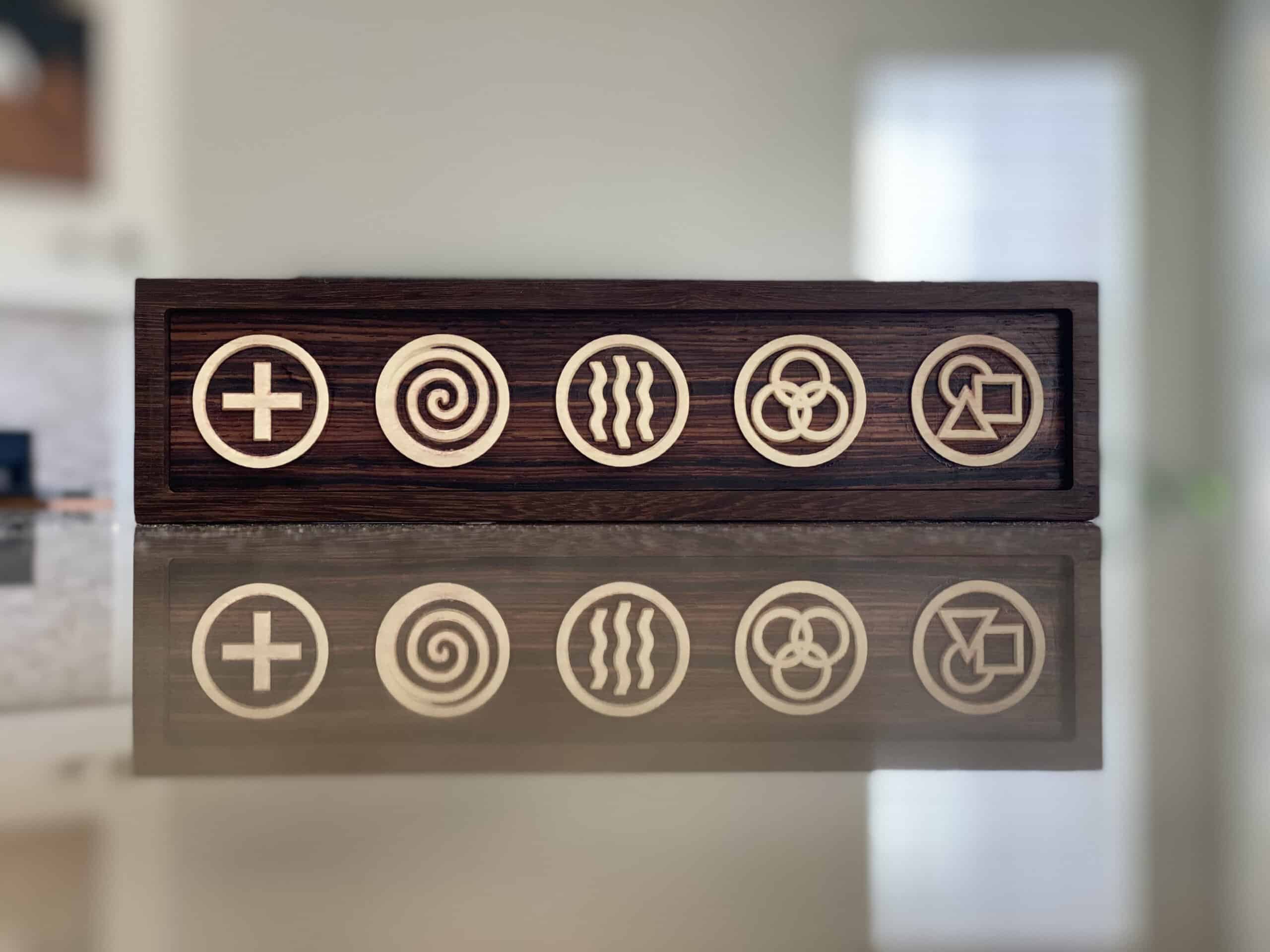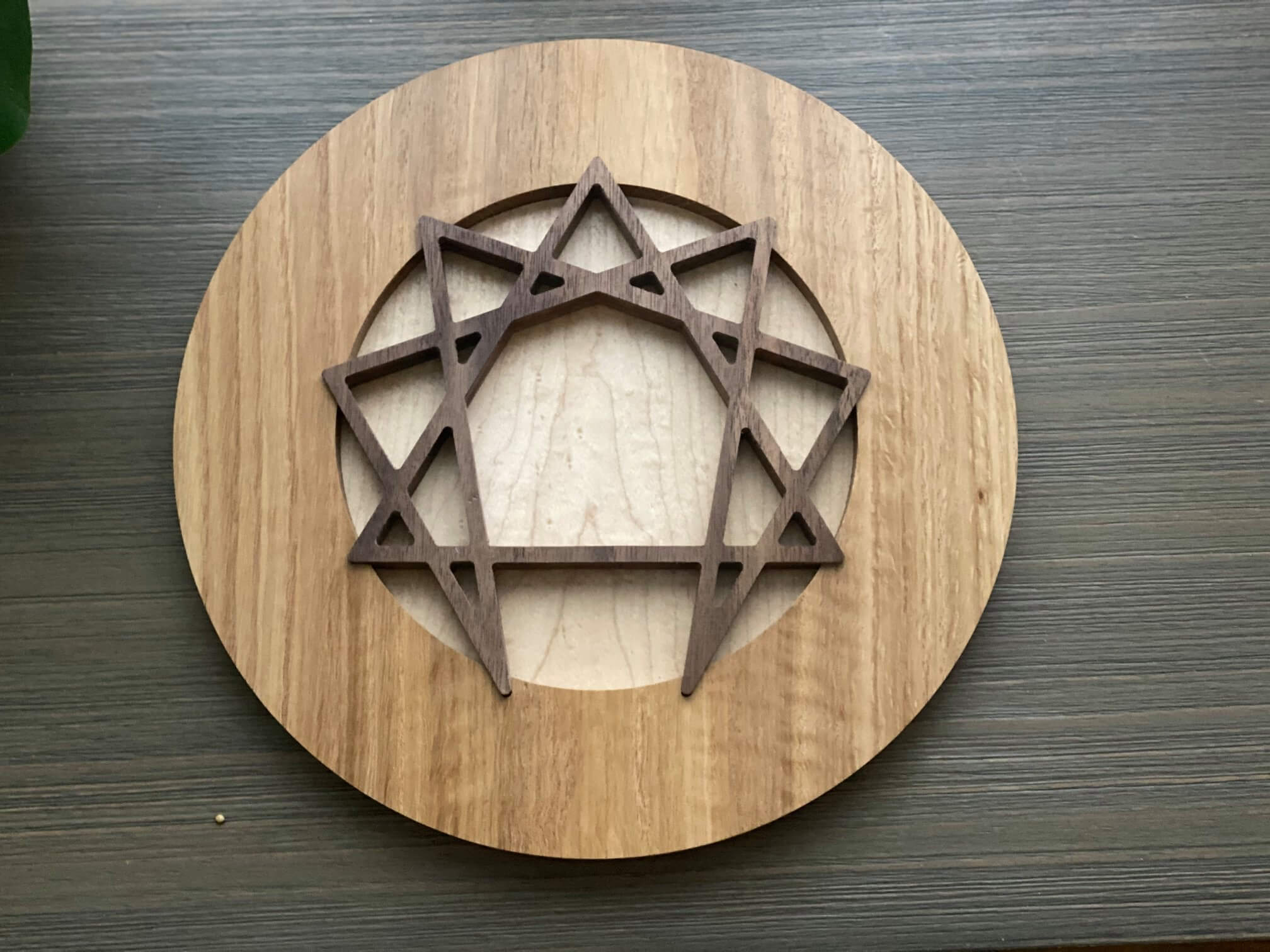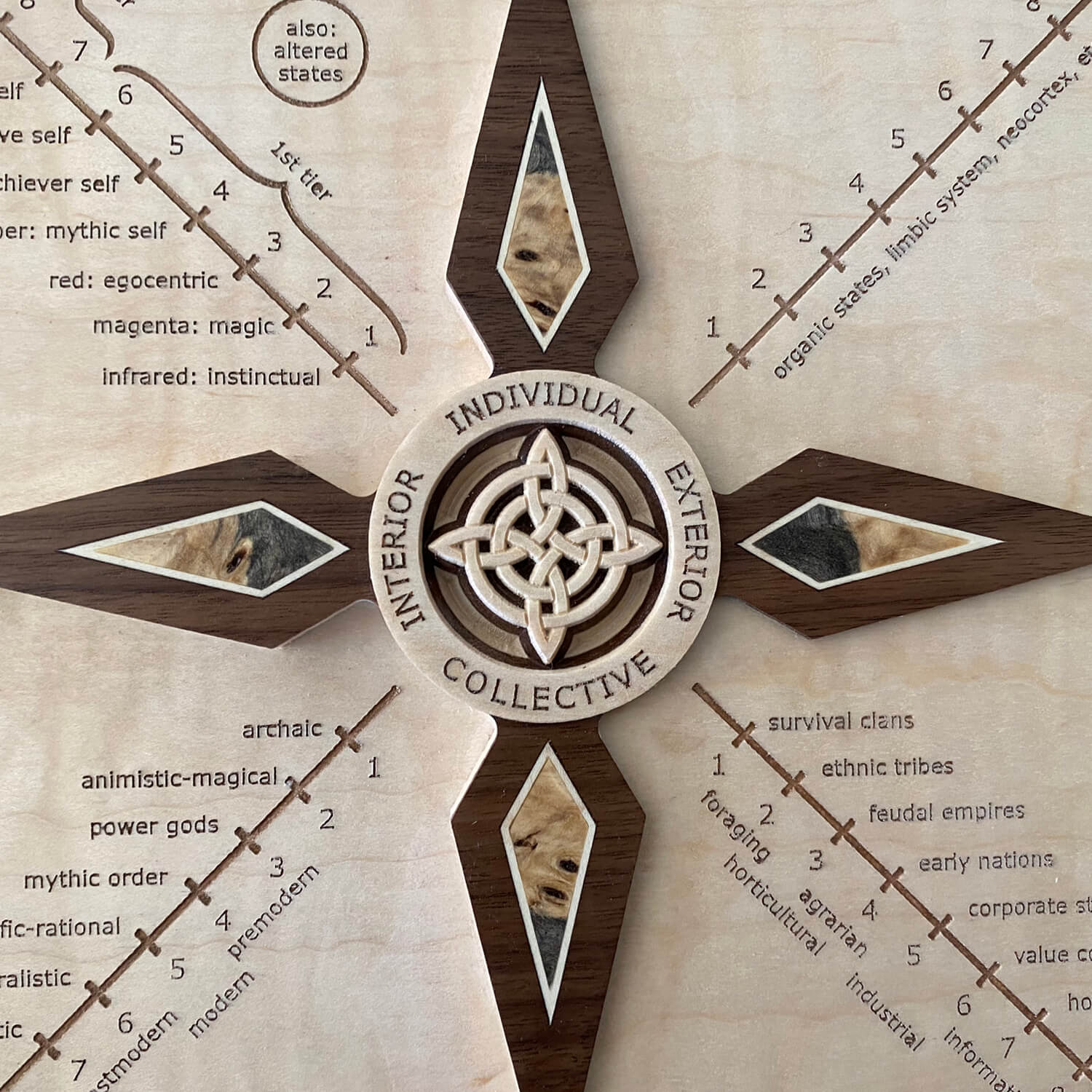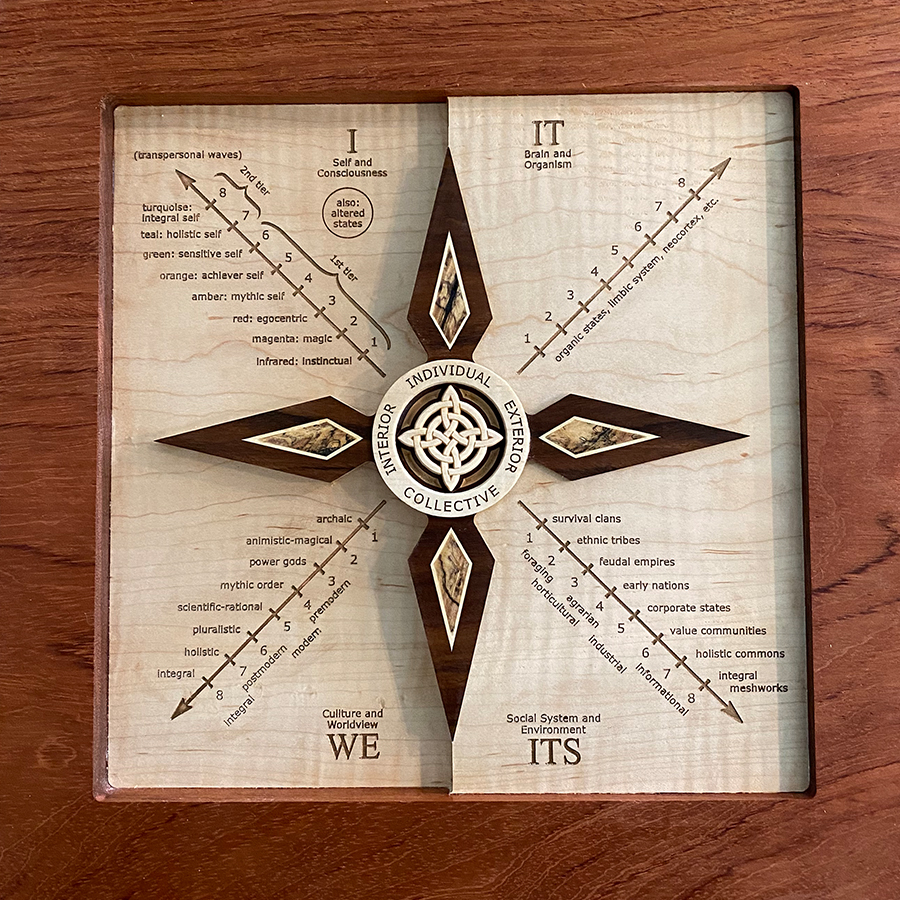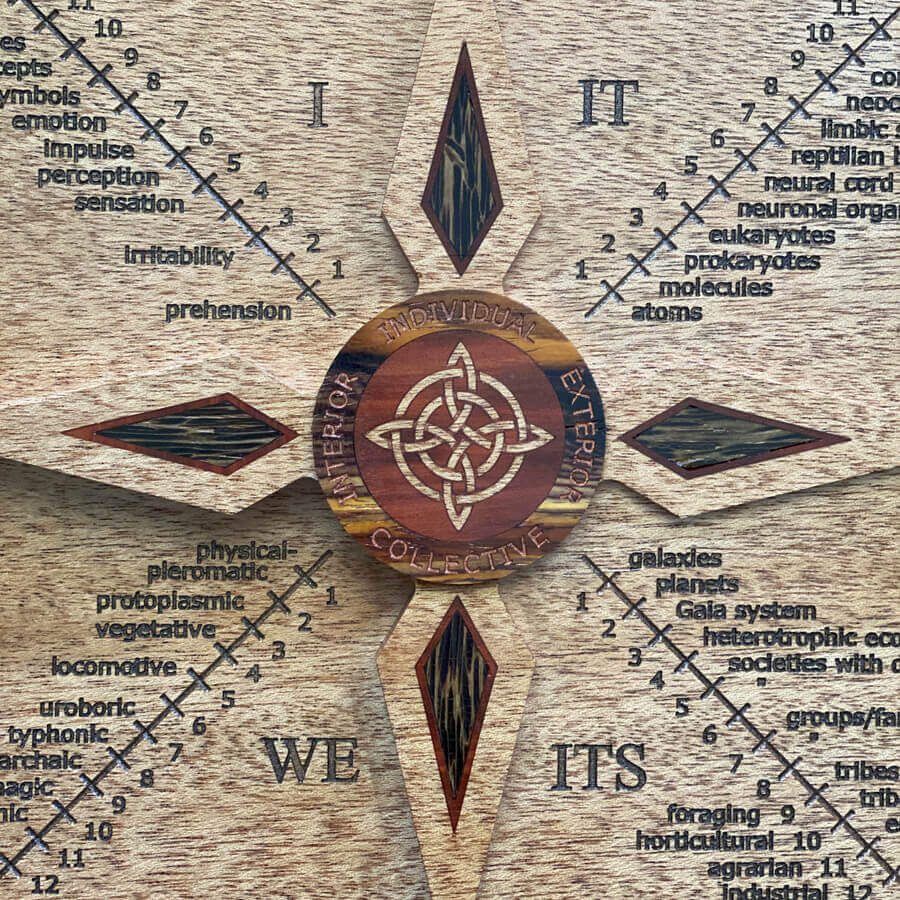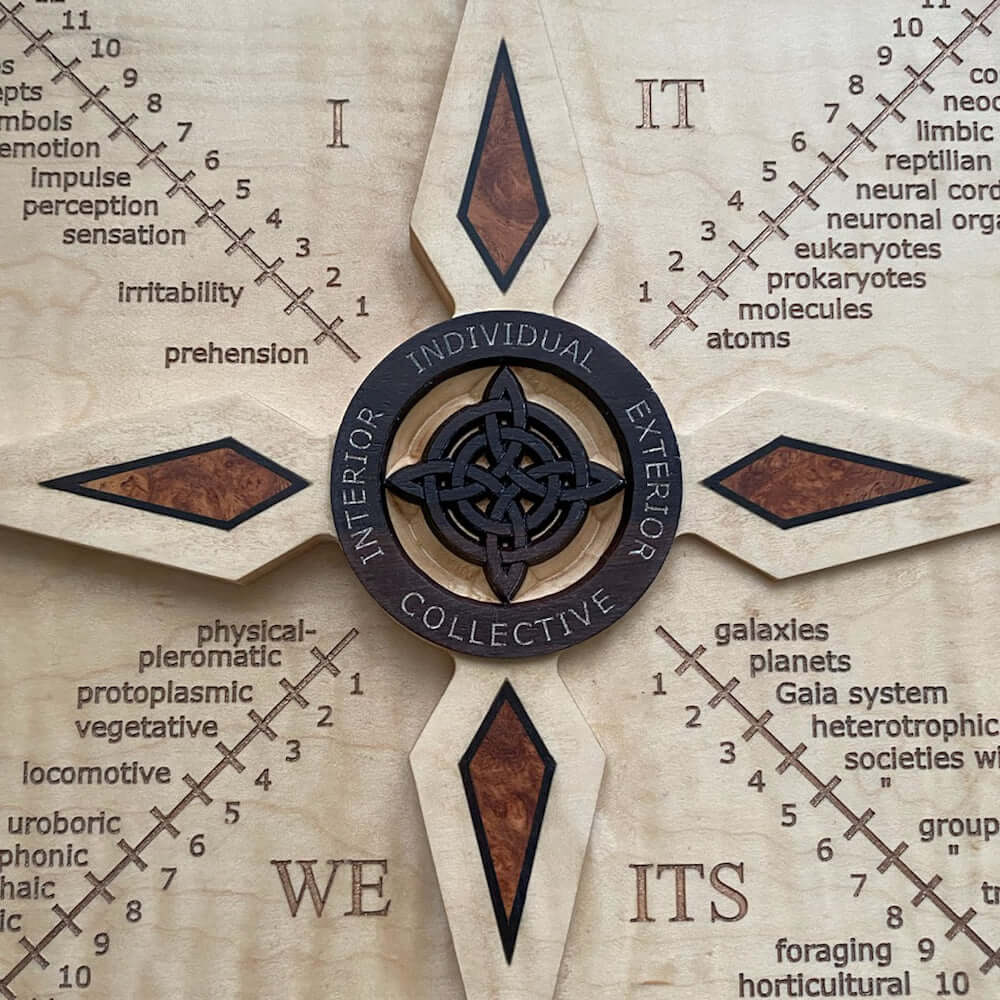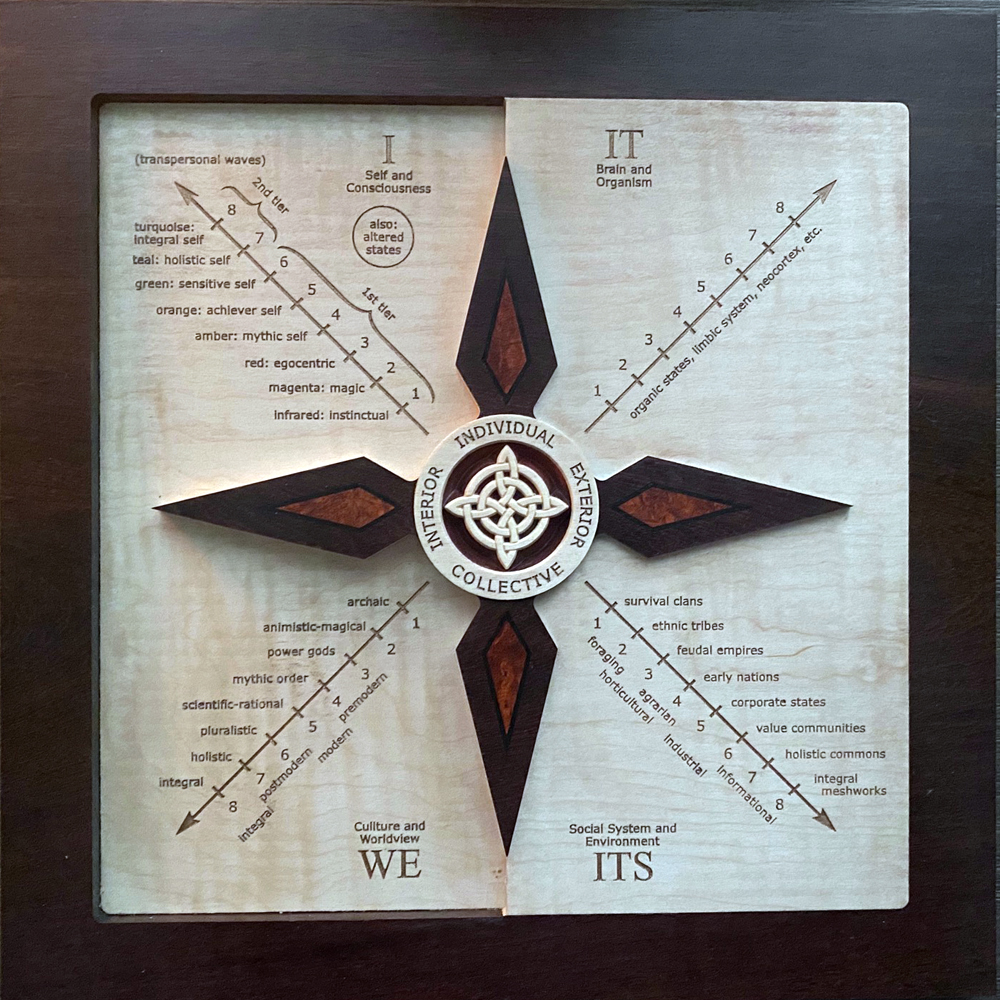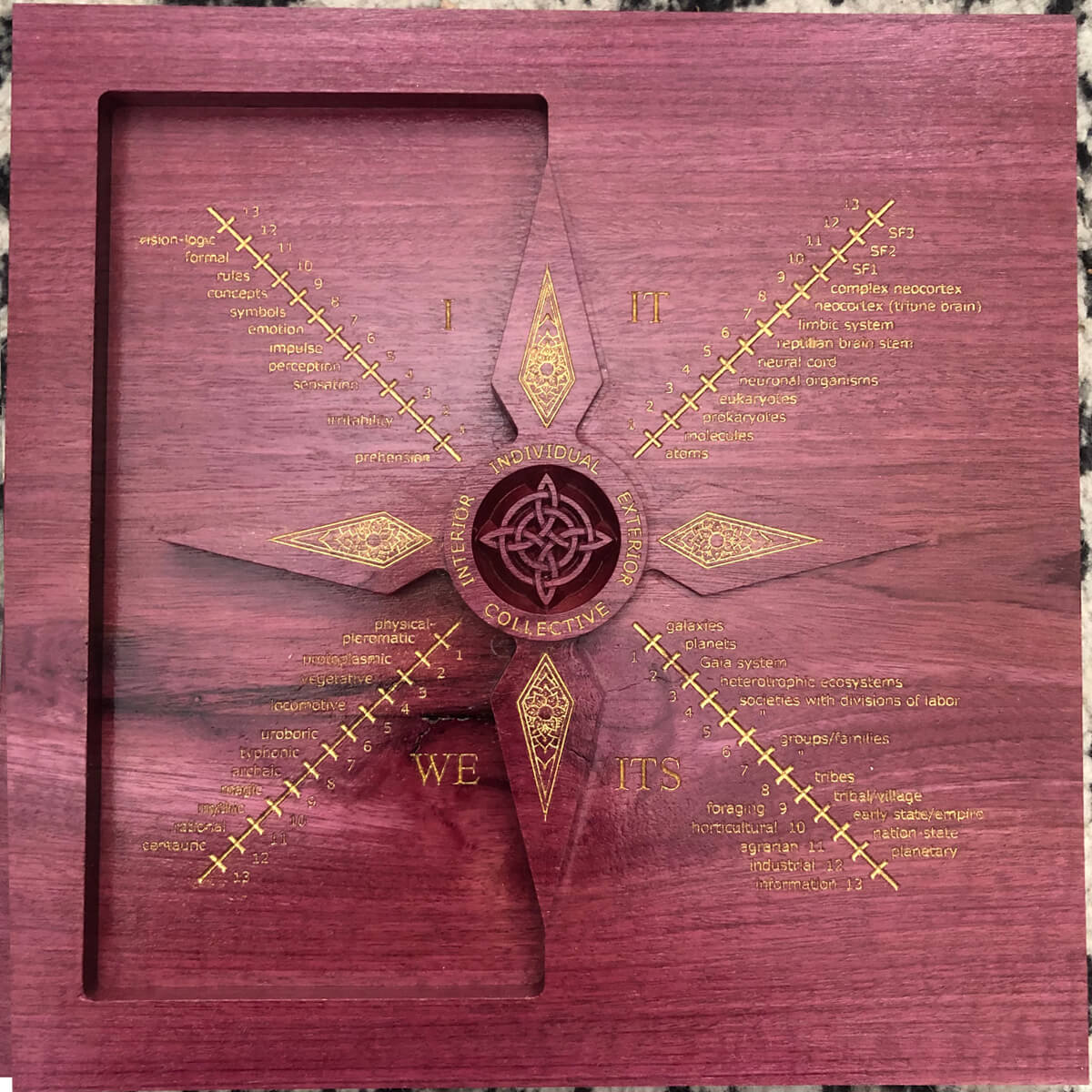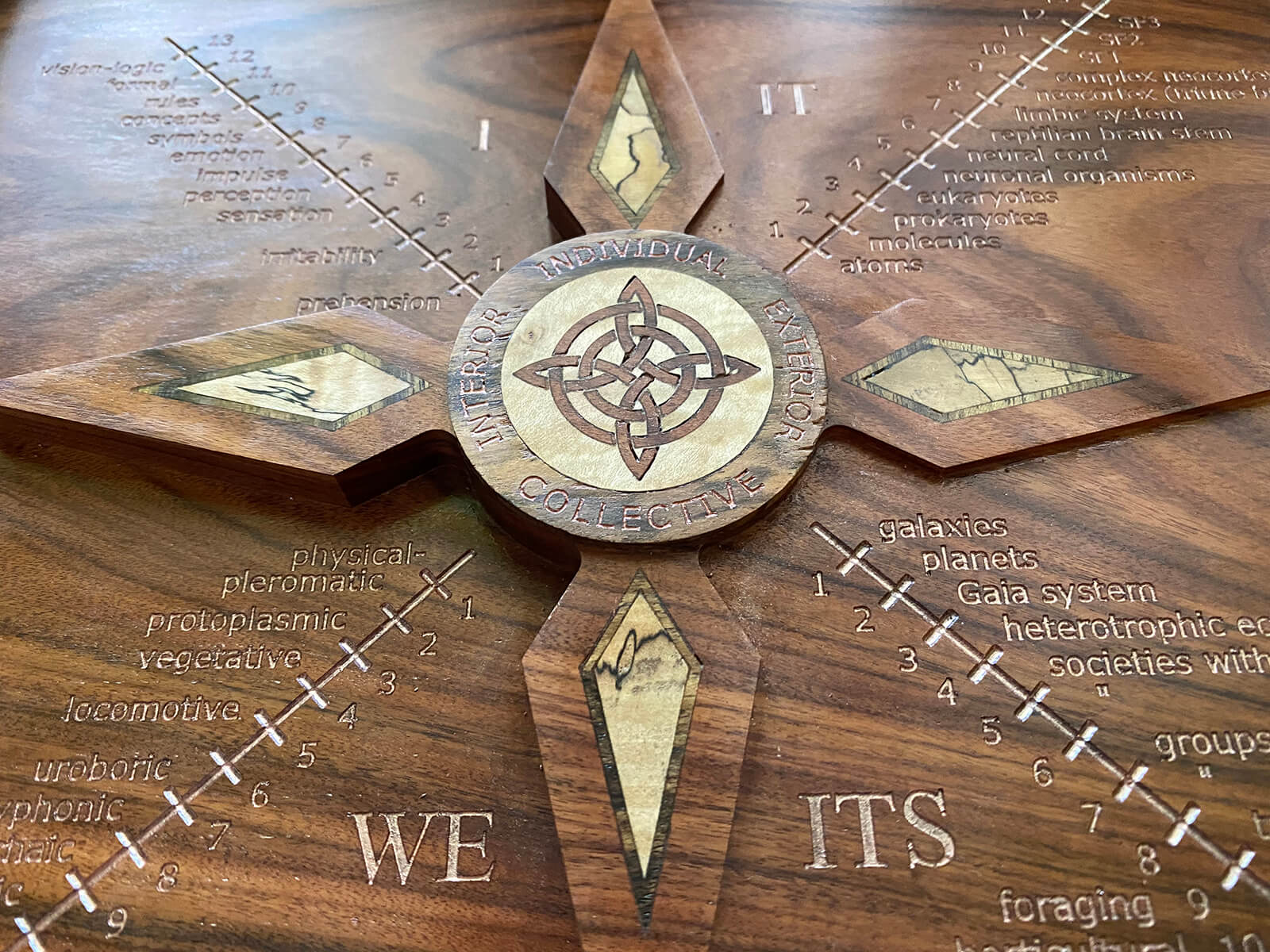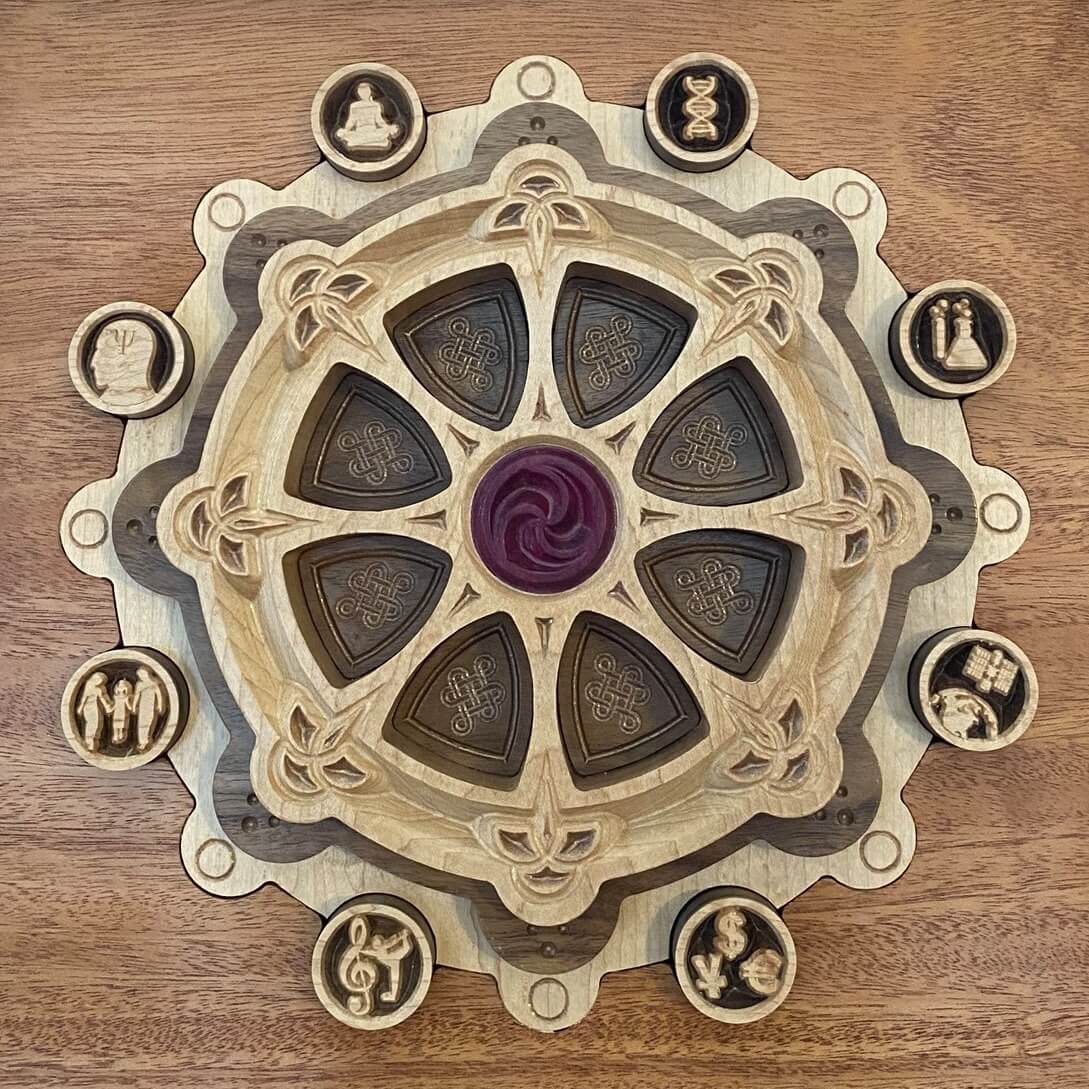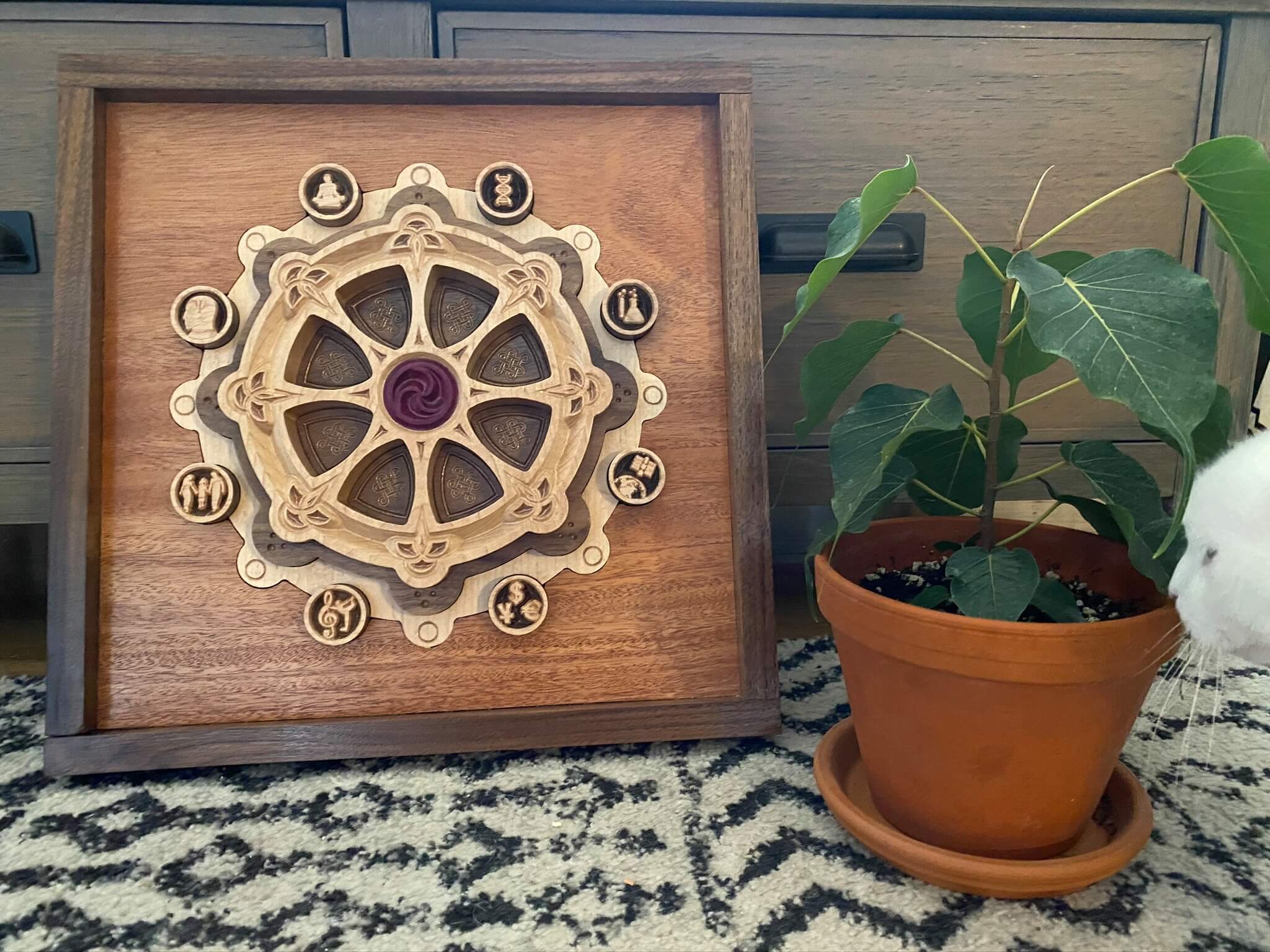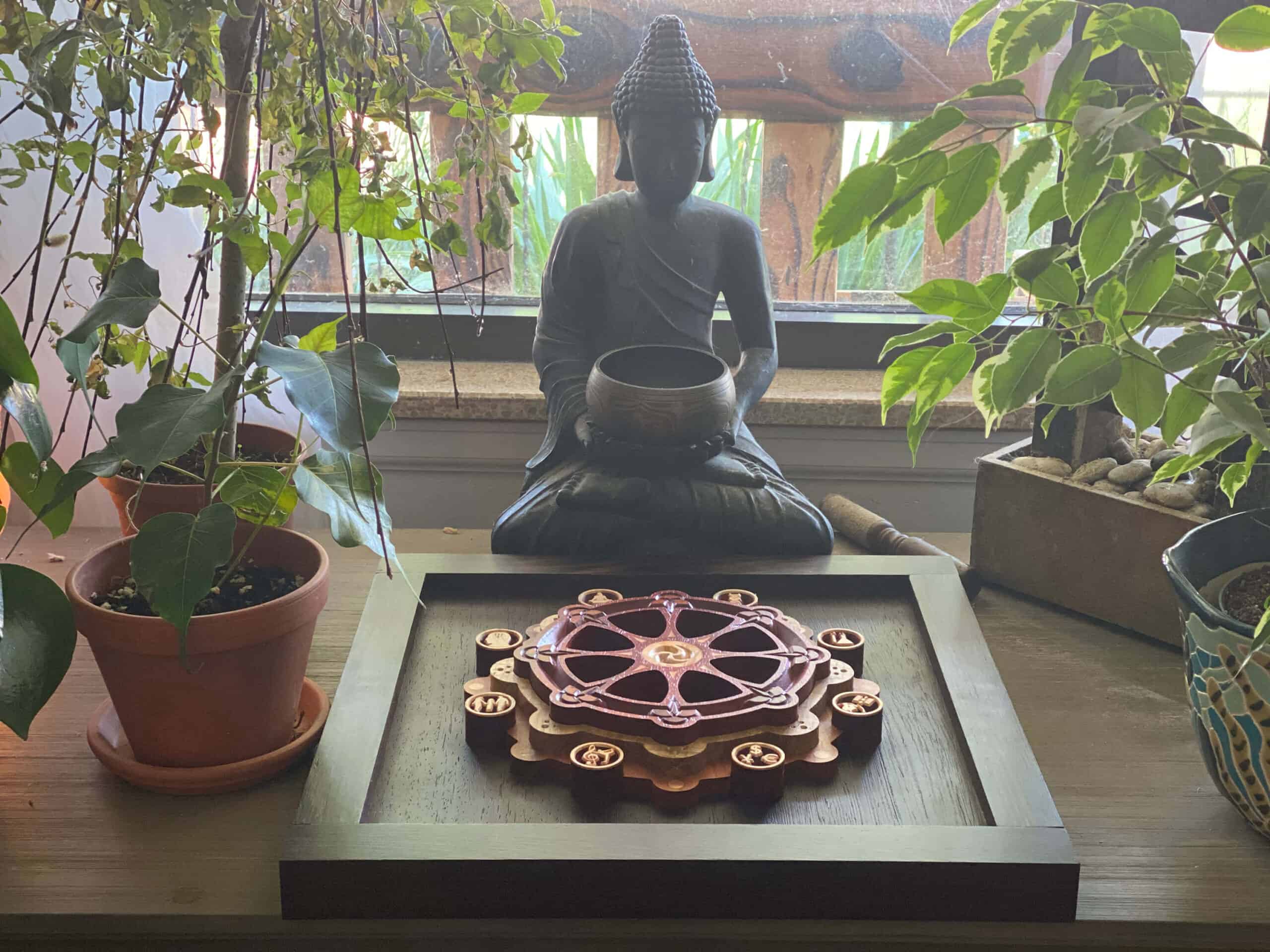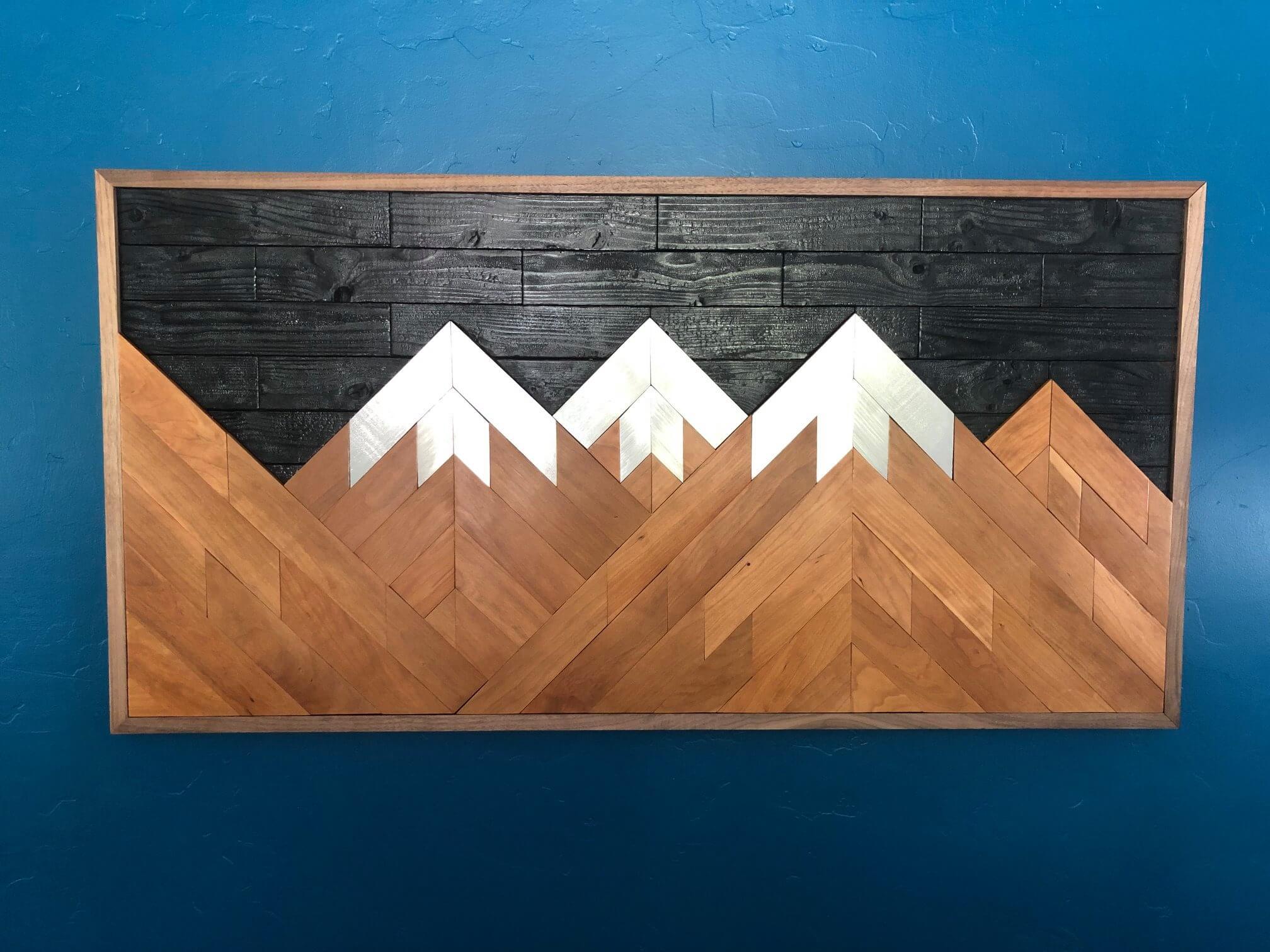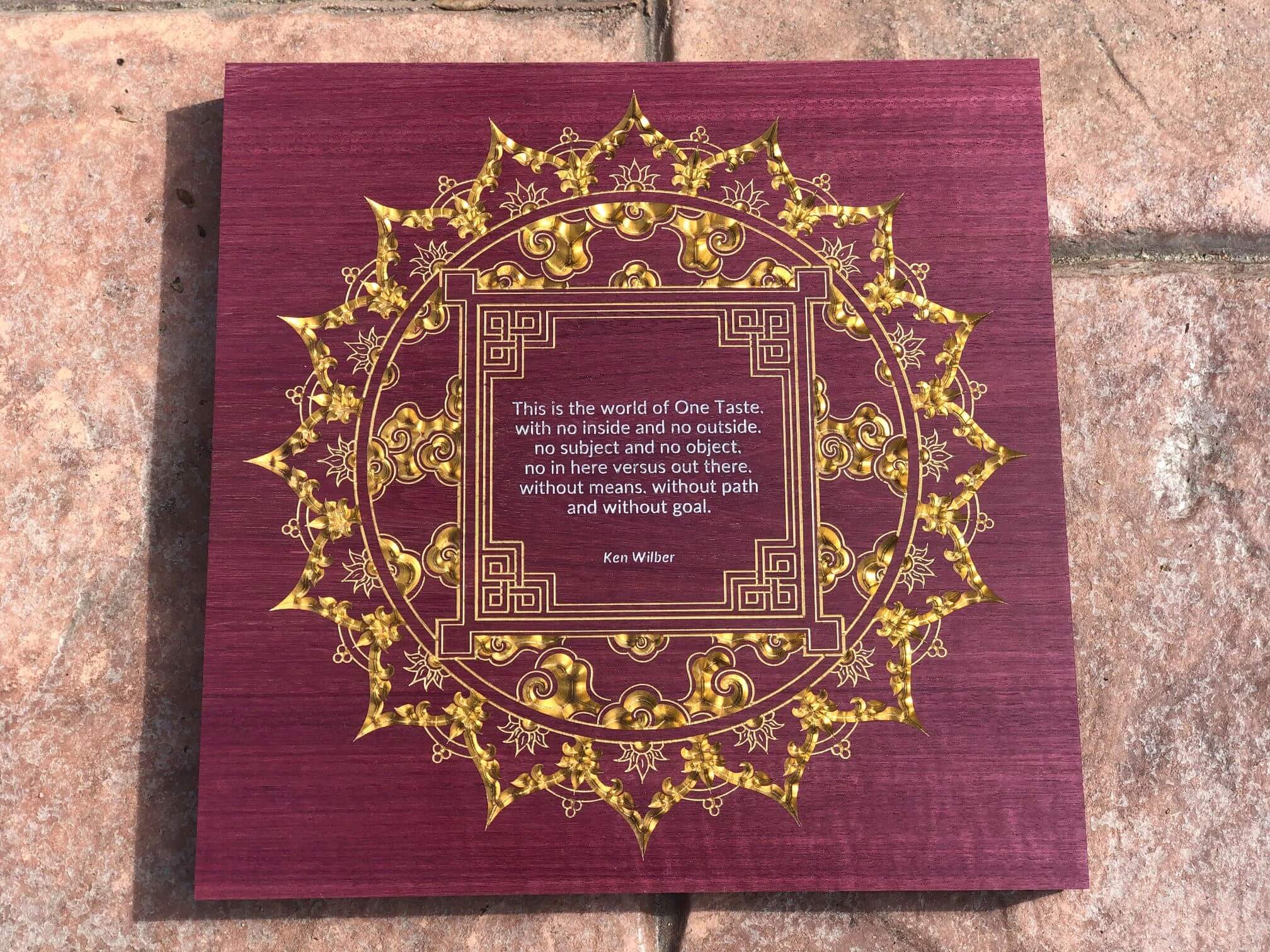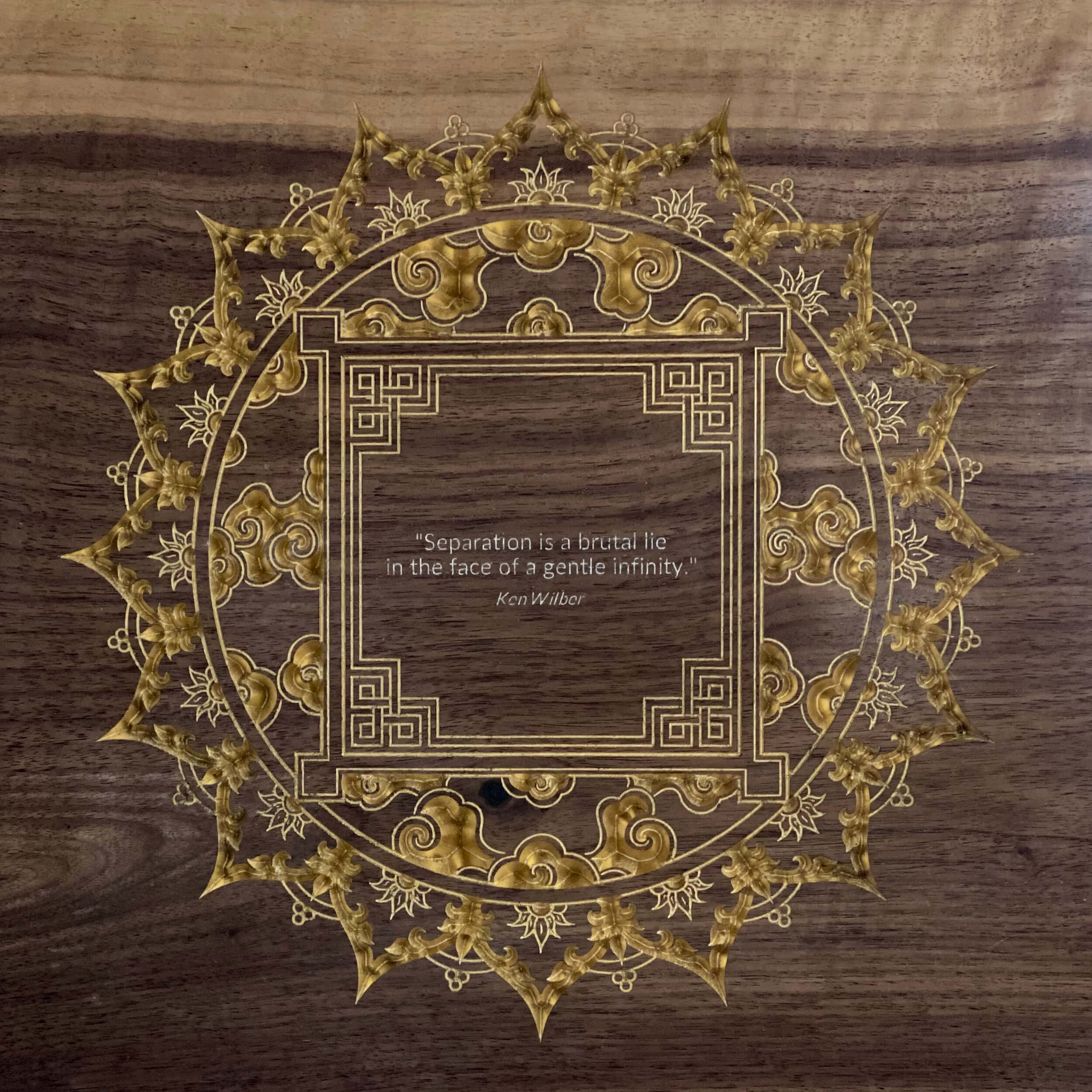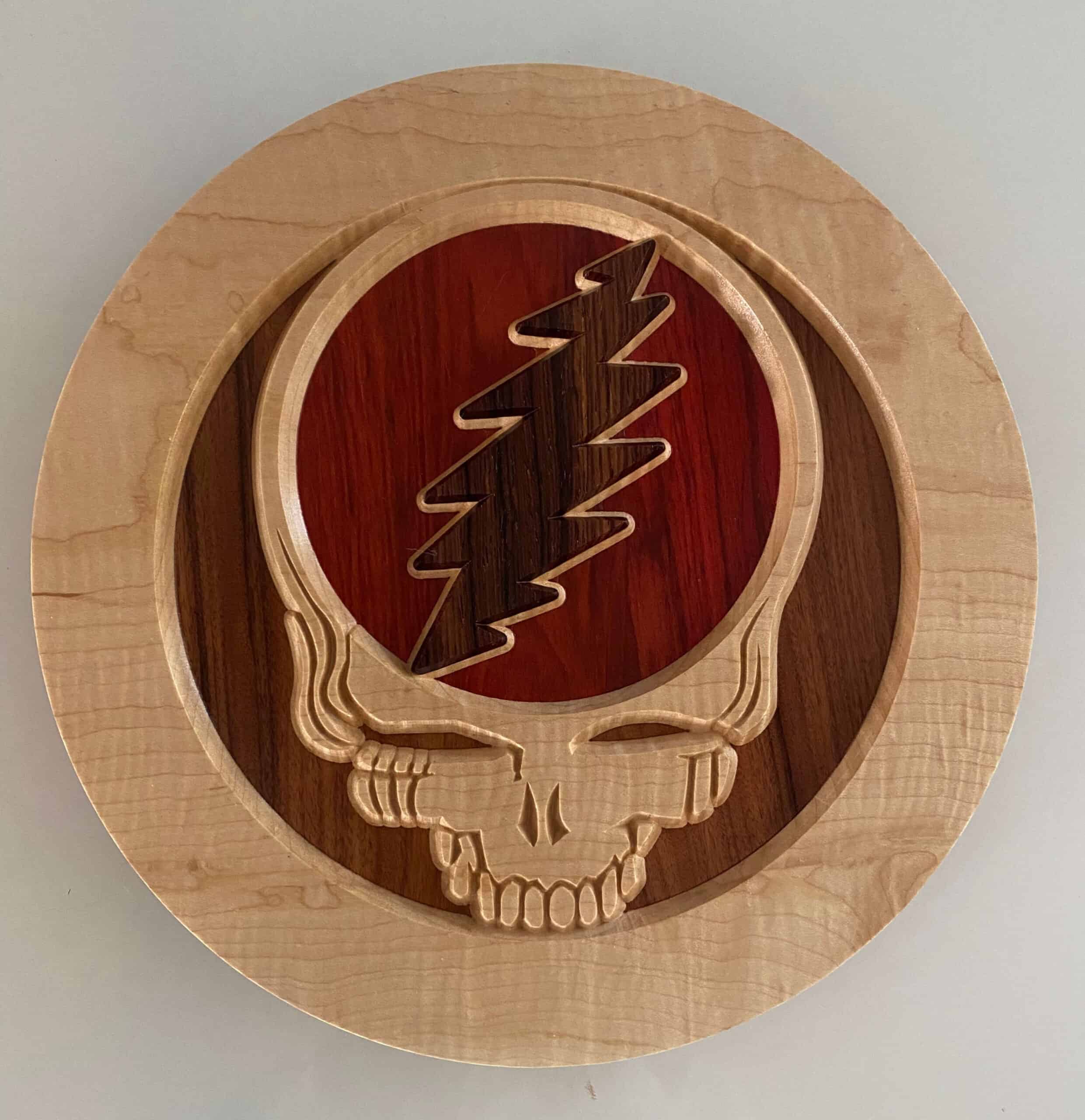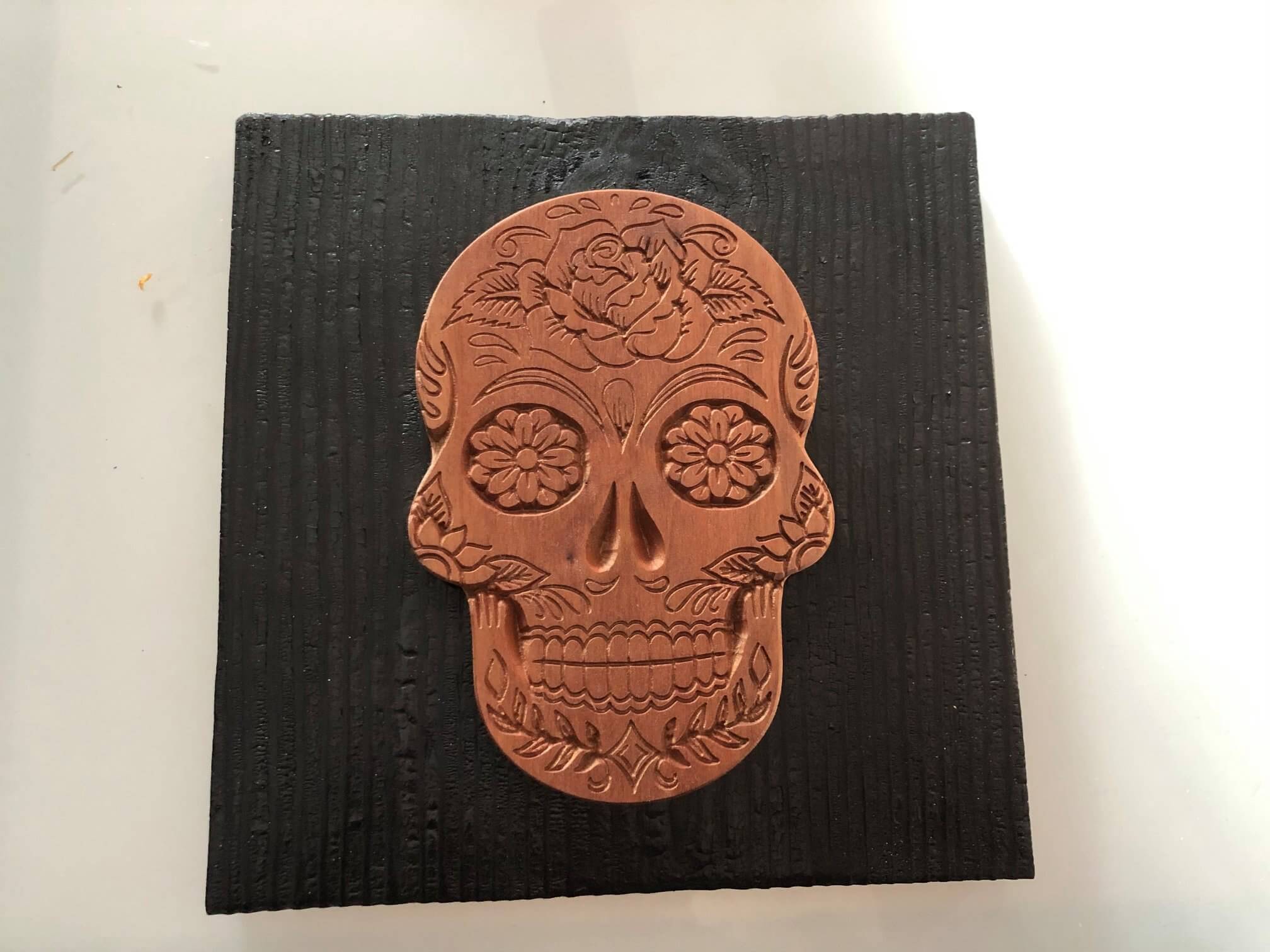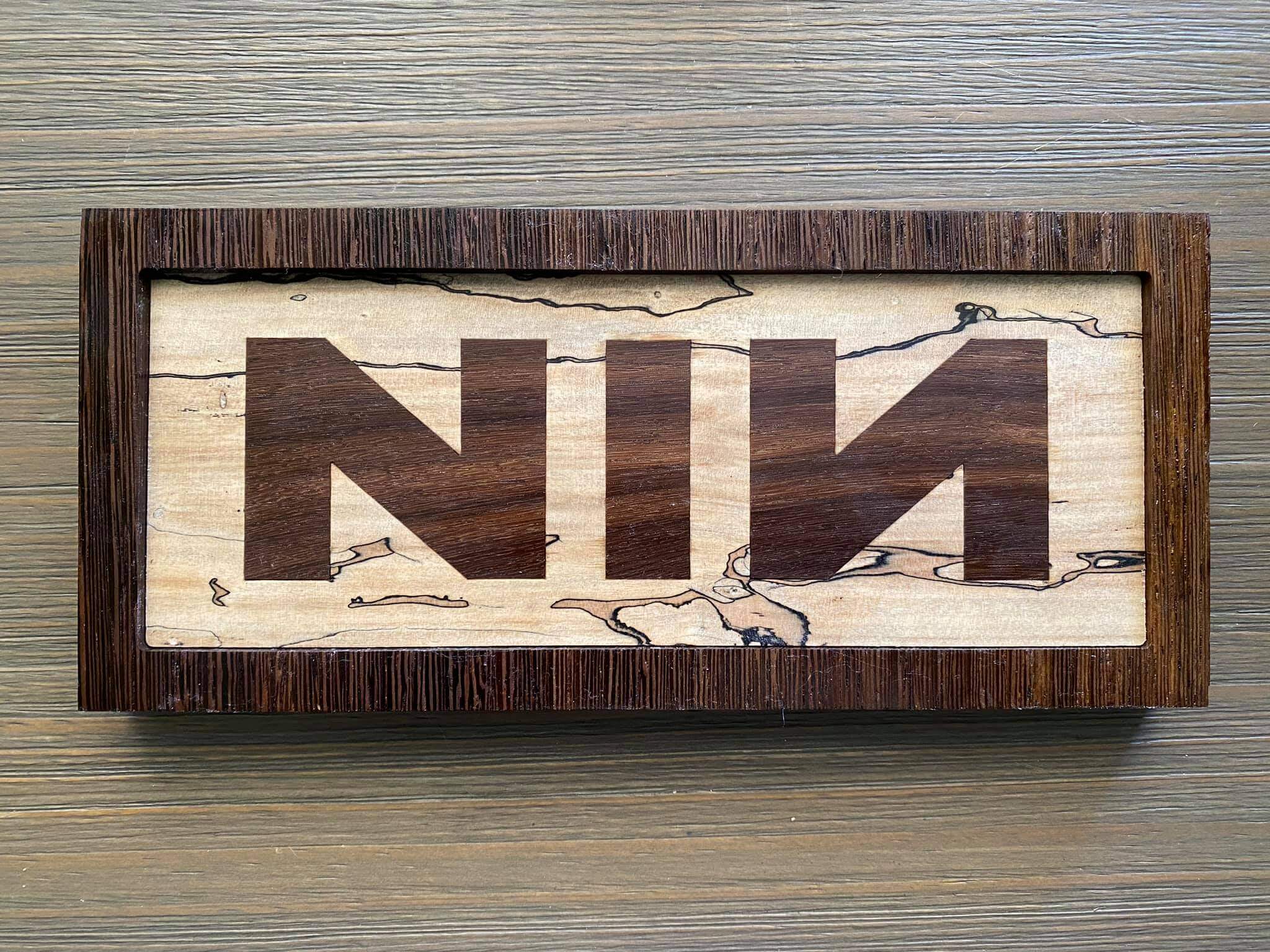
Part of an extended study playing with the polarity of entropy and creativity, using one of my favorite bands as subject. I am using entropic materials (Spalted Maple in this case, the result of fungus infecting a fallen and decaying tree, resulting in this incredibly beautiful figuring) in order to reconstruct various NIN album covers. Basically my version of painting a bowl of fruit. Available for commission — contact corey@integrallife.com
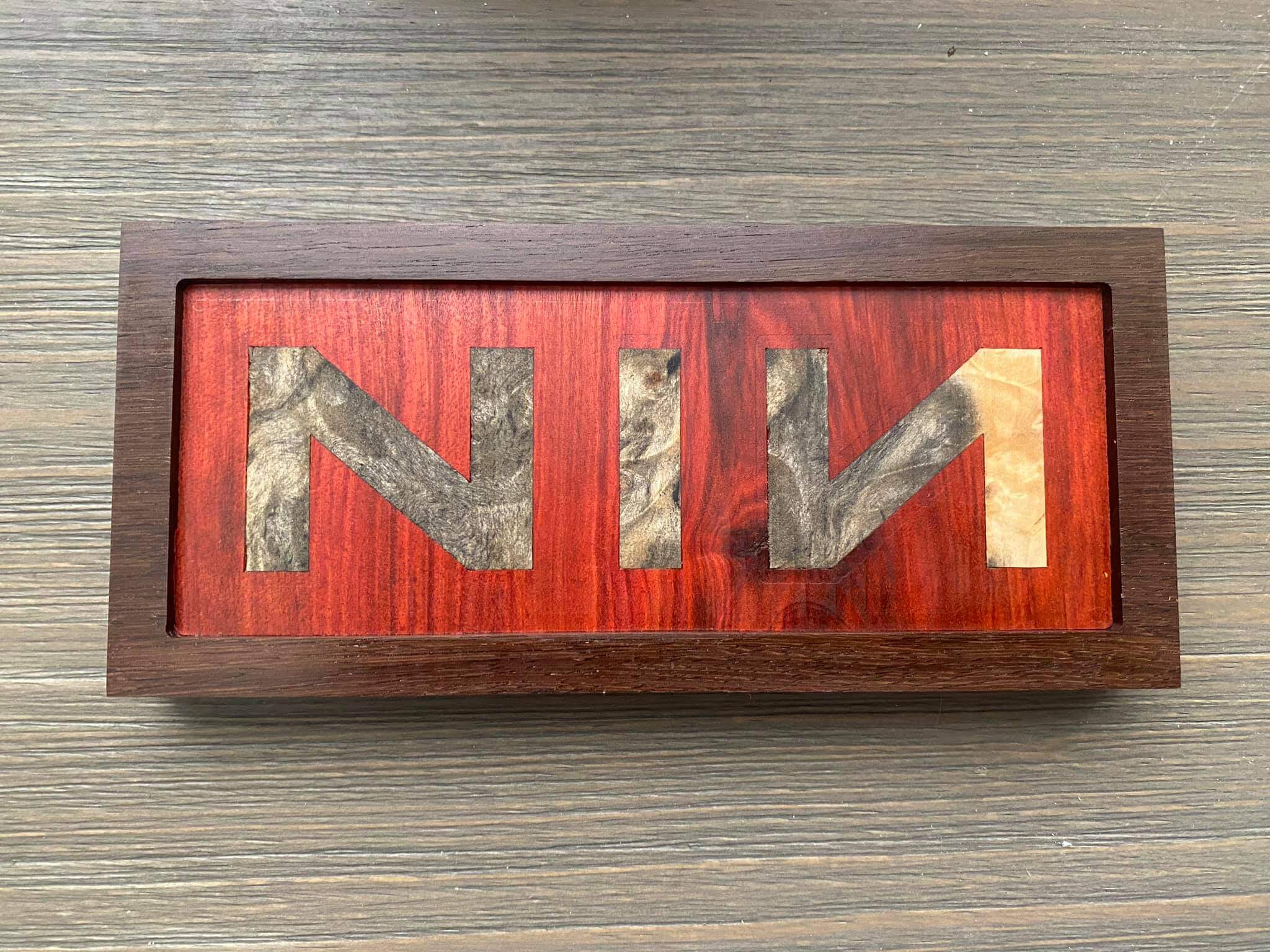
Part of an ongoing study playing with the polarity of entropy and creativity, using one of my favorite bands as the subject. I am using entropic materials (Buckeye Burl in this case, basically a big beautiful tree tumor) in order to reconstruct various NIN album covers. Basically, my version of painting a bowl of fruit. Available for commission — contact corey@integrallife.com
Like what you see in this gallery? Commission a piece for yourself! Just contact me at corey@integrallife.com and I would be more than happy to create a custom piece just for you.
The Four Quadrants are by far my most popularly requested pieces. If you would like to learn more about the commission process, click here!
Artist’s Statement
I have always approached my work as an artist, whether it’s writing copy for our Integral Life content releases, producing our weekly integral discussions, designing images for our publications, or even building the website itself. All of this comes from a deep and relentless urge in my heart to exercise my creativity every single day, and to help nurture a space where beauty and goodness can freely emerge through us and between us.
In recent years, much of my creativity has been focused around my woodworking. It has become an all-consuming passion for me, and over the last year or so I have created a number of custom-designed carvings that try to bring integral ideas and iconography out of the abstract and into solid material form.
Tools
A great deal of my work is being done with a CNC machine — a big dumb robot holding a router that does exactly what I tell it to. This tool represents a confluence of so many of my accumulated skills and interests, as well as a seamless integration of agrarian, industrial, and informational technologies.
When I am programming my machine to do its work, it sort of feels like I’m teaching a robot to do mudras. It certainly feels that way while watching it do its thing — sacred movements and rituals performed with repeatable precision, down to the thousandth of an inch.
This is why I named my studio Vision Logix Woodworks — because my process brings together both hemispheres of art and engineering, symbolism and science, semiotics and robotics. My goal is essentially to take these many illustrations and diagrams that have generated so much meaning for us, to make them as beautiful as possible, and to give people an opportunity to bring a unique piece of integral art into their homes.
Creative Process

When it comes to my actual creative process, there is a subtle feeling of pulling something “down” out of abstract ideation, and through multiple increasingly-dense layers — meaning, math, measurement, emotion, sensuality, etc. So there is definitely a feeling of embodiment happening, in my own body as well as in the artifact itself. I’m tempted to say it makes the idea more “real” for me, but that’s not quite right — it just makes it more visible and visceral. Taking it into the muscle.
Medium
I use a very wide variety of rare, exotic, and ethically-sourced woods in my art. Working with these different materials has dramatically deepened my appreciation for wood itself.
Trees are some of the most fascinating and fundamental organisms on this planet (see below for some fun facts about trees you can share at your next Zoom party!) Every unique tree has a unique story, and that story is encoded into the physical structure of the tree itself. Every year the tree’s growth and struggles and successes are documented, each new cycle transcending and including the last. We can see the story in the grain, in the rings, and in the flesh of the wood.
When we cut into a fallen tree, we are cutting into that story. And when we do, we see a unique thumbprint cross-section of that tree’s life and history — all those knots and patterns and colors are communicating to us in a language we cannot possibly understand, but whose beauty and wisdom continues to speak to us.
When I am working on a piece, what I am actually doing is imprinting my idea or vision into the meat of an organism that has its own unique history and story to tell, which I need to enfold into the story of whatever piece it is that I am trying to create.
There’s a strange intersection where the story I am “pulling down” meets the story of the wood itself, which is “reaching up” to meet the idea and the design. One story is flowing down from the vision — out of the casual, into the subtle, and into the gross. And the other is flowing up from the medium itself — out of the gross, into the subtle, and then into the causal. These two stories need to be able to harmonize, intertwine, and complement each other. Which is why finding the perfect piece of wood for the piece I am working on is such a fun, fulfilling, and often challenging part of the process.
Thank you for taking a look at my Vision Logix gallery. And if there are any pieces here that you would like to commission (or any other ideas for that matter!), you can feel free to contact me at corey@integrallife.com.
A few amazing facts about trees
- Trees are some of the largest — and oldest — organisms on the planet. The very first trees were not actually made of wood — that came later.
- In fact, the largest living organism that is currently on the planet is a massive grove of Aspen trees in Utah known as Pando. Every tree in the grove is genetically identical to the tree next to it, and all share a single root system. This mega-organism has been around for hundreds, and even more likely thousands of years.
- When wooden trees did evolve, there did not yet exist any bacteria that was capable of breaking down the cellulose and lignin after they fell. (And they fell often, because they grew tall but had very shallow root systems). This created a massive glut of un-decayed dead trees piling up on the ancient forest floors, which eventually formed the vast majority of coal deposits that now exist on this planet.
-
Trees should be no taller than 10 meters or so. This is because a tree has to actually draw water up from the ground, but there is a limit to how far up that water can go in any cylinder, before the suction pressures actually create a vacuum and cause the water to boil away. That limit is about 10 meters or so.
So how do trees do it? Capillary action cannot account for this, because the internal “tubes” are too wide. However, trees have evolved some fascinating internal mechanisms — basically a complex series of nano-sized pores — that allow it to exert as much as NEGATIVE 15 ATMOSPHERES of pressure on the water.
Which is amazing — remember, as soon as the water hits 0 atmospheres of pressure, it should boil away. But because the “tubes” in the tree do not have any gas in them whatsoever, the water is forced to remain in a meta-stable liquid state even though it should be boiling. Which basically puts something like a tension pressure on the water — the tree is literally *stretching liquid water* like an elastic band, causing the water molecules to then pull each other up the tree.And after all that work to bring the water all the way up to the top of the tree, 95% of it is then released. Only 5% of the water actually gets used for photosynthesis and to absorb carbon dioxide. That’s a lot of work for just a few molecules!
- Have you ever asked yourself, “where does a tree’s mass actually come from?” Think about it for a moment. When a tree grows larger, where does that mass actually come from?
Most people intuitively say “the ground”, and think that the roots are pulling up nutrients from the soil that are eventually converted into the tree’s mass. However, if we think about the conservation of mass, that would mean there should be a giant hole in the ground wherever a tree grows. So that’s not it.
Other people say “then it’s the water!” But as we just demonstrated, the tree actually uses only a tiny fraction of the water molecules it pulls up from the ground, not nearly enough to form all of that mass.
And it’s obviously not sunlight, because as amazing as trees are, they haven’t quite figured out how to convert raw energy into mass at those scales.
So that only leaves us one more option:
Trees are made of air.
They pull the carbon out of the carbon dioxide in the air, and that carbon then becomes part of the tree’s mass.
Which means that every time you exhale, your breath becomes part of a tree’s body. You lose some of your own mass with every breath, which then becomes part of a tree’s mass.
Trees are literally made of you.
We are inextricably linked to these amazing ubiquitous organisms, and I think that is miraculous.
About Corey deVos
Corey W. deVos is editor and producer of Integral Life. He has worked for Integral Institute/Integal Life since Spring of 2003, and has been a student of integral theory and practice since 1996. Corey is also a professional woodworker, and many of his artworks can be found in his VisionLogix art gallery.

